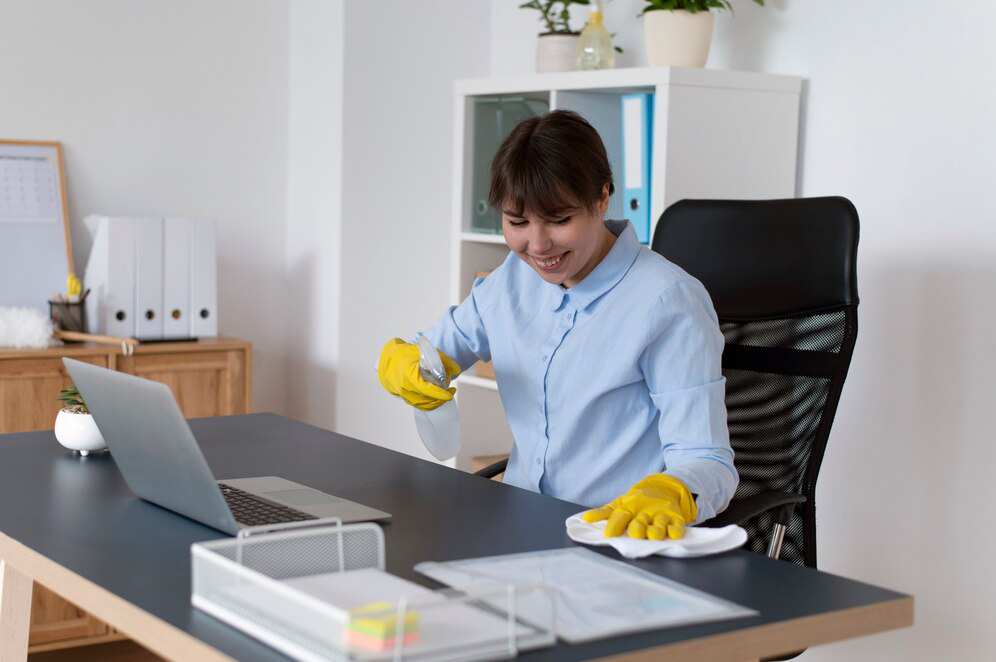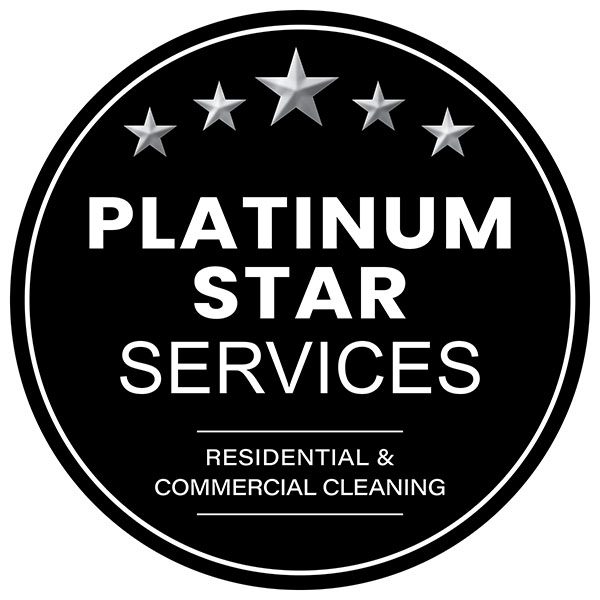In the hustle and bustle of daily life, it’s easy to overlook the importance of surface cleaning. Yet, the repercussions of neglecting this seemingly mundane task can be more significant than we realize. From seemingly harmless dust accumulation to the invisible threat of bacteria and viruses lurking on surfaces, the hidden dangers of neglecting surface cleaning pose risks to our health, wellbeing, and even productivity.
In this blog, we delve into the often underestimated consequences of disregarding regular cleaning routines. By shedding light on these overlooked hazards, we aim to empower readers with the knowledge to prioritize cleanliness in their living and working environments, safeguarding against the silent perils that may otherwise go unnoticed.
Unseen Allergens Accumulating on Surfaces
Often overlooked, dust mites thrive in neglected environments, especially on surfaces where dust collects. These microscopic creatures feast on dead skin cells and thrive in humid conditions, making upholstered furniture, carpets, and bedding their ideal habitat. Their presence can exacerbate allergies and respiratory conditions, triggering symptoms like sneezing, coughing, and itchy eyes. Regular surface cleaning is crucial in minimizing dust mites’ proliferation and reducing allergic reactions. Vacuuming with a HEPA filter, dusting surfaces frequently, and washing bedding in hot water can help keep these unseen allergens at bay, promoting a healthier indoor environment for all inhabitants.
The Risk of Contaminated Surfaces
The risk of contaminated surfaces is a pressing concern in both residential and commercial settings, where everyday activities can inadvertently spread harmful pathogens. Without proper cleaning and disinfection measures, surfaces become breeding grounds for bacteria and viruses, posing significant health hazards to occupants. Key points regarding the risk of contaminated surfaces include:
- Cross-contamination: Dirty surfaces facilitate the transfer of microbes from one surface to another, increasing the likelihood of infection transmission.
- Common touchpoints: High-traffic areas such as doorknobs, light switches, and countertops are prime breeding grounds for bacteria, requiring frequent cleaning and disinfection.
- Food preparation surfaces: Neglected kitchen surfaces can harbor foodborne pathogens, leading to food poisoning and gastrointestinal illnesses if ingested.
- Healthcare facilities: Surfaces in hospitals and clinics must undergo rigorous cleaning protocols to prevent healthcare-associated infections and safeguard patient safety.
- Personal hygiene: Regular handwashing and surface disinfection are essential practices for minimizing the risk of contamination and maintaining a hygienic environment.
- Public spaces: Shared surfaces in public restrooms, transportation, and recreational facilities require regular sanitation to prevent the spread of infectious diseases among the general population.
By addressing the risk of contaminated surfaces through proactive cleaning strategies and adherence to hygiene protocols, individuals and organizations can mitigate the spread of illness and promote overall wellbeing.
How Neglected Surfaces Spread Illness
Viruses, including the common cold and flu, can linger on surfaces for hours or even days, posing a constant threat of transmission to unsuspecting individuals. Neglected surfaces in high-traffic areas, such as offices, schools, and public transportation, become hotspots for viral contamination. Without regular cleaning and disinfection, these surfaces serve as vectors for the spread of illness, contributing to outbreaks and epidemics. Implementing stringent cleaning protocols, especially during flu seasons or times of heightened viral activity, is crucial in mitigating the risk of viral transmission. By regularly sanitizing commonly touched surfaces, we can significantly reduce the likelihood of illness and protect public health.
Hidden Threats in Damp Environments
Damp and neglected surfaces provide the ideal conditions for mold and mildew growth, which can have detrimental effects on both health and property. Mold spores are ubiquitous in the environment and can easily colonize surfaces with excess moisture, such as bathrooms, kitchens, and basements. Not only do mold and mildew compromise indoor air quality, leading to respiratory issues and allergic reactions, but they also cause structural damage and unsightly stains. Preventing mold growth requires vigilant surface cleaning, prompt repair of leaks and moisture sources, and adequate ventilation in moisture-prone areas. By addressing dampness and maintaining cleanliness, we can mitigate the risks associated with mold and mildew infestation.

The Consequences of Dust Buildup
The consequences of dust buildup extend beyond mere inconvenience, posing significant risks to both health and property. As dust accumulates on surfaces, it can have far-reaching implications that impact various aspects of our daily lives:
Consequences of Dust Buildup:
Health Risks
Dust particles can contain allergens, pollutants, and even toxic chemicals, exacerbating respiratory conditions such as asthma and allergies. Prolonged exposure to airborne dust can lead to coughing, wheezing, and other respiratory symptoms, especially in vulnerable individuals.
Declining Indoor Air Quality
Dust buildup contributes to indoor air pollution, compromising air quality and creating an unhealthy living environment. Poor indoor air quality can trigger allergic reactions, respiratory issues, and other health problems, affecting the wellbeing of occupants.
Property Damage
Dust accumulation can cause damage to surfaces and materials over time, leading to deterioration, discoloration, and corrosion. Delicate surfaces such as wood, glass, and electronics are particularly susceptible to damage from dust buildup, requiring regular cleaning and maintenance to preserve their integrity.
Reduced HVAC Efficiency
Dust accumulation in HVAC systems can impair their efficiency and performance, leading to higher energy consumption and increased utility bills. Clogged air filters and ducts restrict airflow, forcing HVAC systems to work harder to maintain desired temperatures, ultimately leading to premature wear and tear.
Addressing the consequences of dust buildup requires proactive measures such as regular cleaning and maintenance routines, proper ventilation, and air filtration systems. By minimizing dust accumulation and improving indoor air quality, we can create a healthier and more comfortable living environment while safeguarding the integrity of our property.
Increased Risk of Respiratory Issues from Unclean Surfaces
Unclean surfaces contribute significantly to indoor air pollution, exacerbating respiratory issues and posing health risks to occupants. Dust, allergens, and pollutants accumulate on surfaces over time, becoming airborne through activities such as walking, dusting, or simply sitting down. These airborne particles can irritate the respiratory tract, triggering symptoms like coughing, wheezing, and shortness of breath, particularly in individuals with preexisting conditions such as asthma or allergies.
Regular surface cleaning, along with proper ventilation and air purification, is crucial in reducing indoor air pollution and mitigating the risk of respiratory issues. By maintaining clean surfaces and promoting good indoor air quality, we can protect respiratory health and enhance overall wellbeing for everyone in the environment.
The Domino Effect of Dirty Surfaces
Dirty surfaces serve as breeding grounds for bacteria and viruses, facilitating the spread of pathogens through cross-contamination. When individuals come into contact with contaminated surfaces, they inadvertently transfer microbes to their hands, which can then spread to other surfaces or individuals.
Common touchpoints such as door handles, shared electronic devices, and kitchen counters are especially susceptible to cross-contamination if not cleaned regularly. This cycle of transmission perpetuates the risk of infection and illness within communities, workplaces, and households.
Implementing thorough cleaning and disinfection protocols, including regular hand hygiene practices, is essential in breaking the chain of cross-contamination and reducing the spread of harmful pathogens.
Attracting Unwanted Guests with Neglect
Neglected surfaces not only harbor bacteria and allergens but also attract pests seeking food, water, and shelter. Crumbs, spills, and food residues left on surfaces provide sustenance for pests such as ants, cockroaches, and rodents, leading to infestations if not addressed promptly. Beyond being a nuisance, pest infestations pose health risks and can cause property damage.
Regular surface cleaning, proper food storage, and sealing entry points are essential in preventing pest infestations and maintaining a hygienic environment. By eliminating attractants and implementing preventive measures, we can keep unwanted guests at bay and preserve the integrity of our living and working spaces.
How Dirt and Grime Impact Material Longevity
Neglected surfaces not only compromise cleanliness and hygiene but also suffer from degradation over time due to the accumulation of dirt, grime, and other contaminants. Surfaces subjected to neglect and inadequate cleaning may experience discoloration, corrosion, or deterioration, diminishing their aesthetic appeal and functional integrity.
Moreover, dirt and debris can scratch or etch delicate surfaces, such as wood, glass, or metal, accelerating wear and tear and reducing their lifespan. Regular cleaning and maintenance practices tailored to specific surface materials are essential in preserving their appearance and durability. By addressing dirt and grime promptly, we can prolong the longevity of surfaces and ensure their continued performance and aesthetic value.
Productivity and Safety Risks of Untidy Surfaces
Untidy surfaces in the workplace pose various hazards, ranging from reduced productivity to increased safety risks for employees. Cluttered workspaces, neglected equipment, and dirty surfaces not only create physical barriers to efficiency but also contribute to workplace accidents and injuries. Slippery floors, obstructed pathways, and malfunctioning machinery resulting from neglect can jeopardize employee safety and wellbeing.
Additionally, unclean surfaces may harbor contaminants that pose health risks, leading to absenteeism and decreased morale among staff. Implementing regular cleaning schedules, providing adequate storage solutions, and promoting good housekeeping practices are essential in maintaining a safe and productive work environment. By prioritizing cleanliness and organization, employers can safeguard employee health and productivity while minimizing the risk of workplace accidents and liabilities.
In conclusion, the hidden dangers of neglecting surface cleaning extend far beyond mere tidiness, encompassing risks to our health, wellbeing, and productivity. From the microscopic threats of dust mites and bacteria to the visible perils of mold and mildew, the consequences of unclean surfaces are significant and wide-ranging. However, armed with knowledge and awareness, we can take proactive steps to mitigate these risks and create healthier living and working environments.
As you embark on your journey to prioritize surface cleaning and create healthier environments, consider seeking professional assistance from Platinum Star Cleaning Services. With their expertise and dedication to cleanliness, you can ensure that your spaces receive thorough and effective cleaning, addressing both visible and hidden dangers.
Contact Platinum Star Cleaning Services today at (610) 504-5469 to schedule a consultation and take the first step towards a cleaner, healthier living or working environment. Together, let’s make cleanliness a priority and safeguard against the risks of neglecting surface cleaning.

